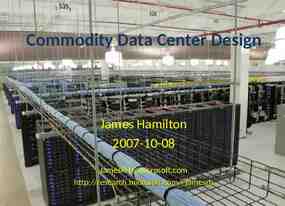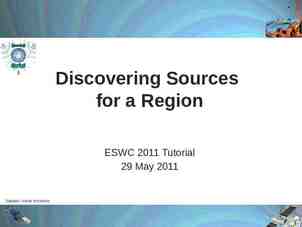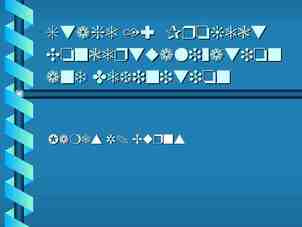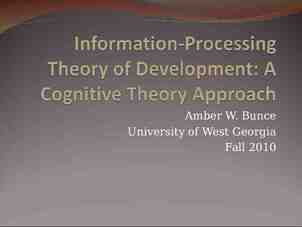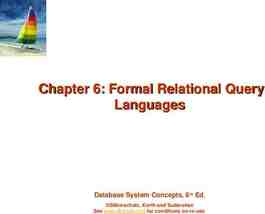Critical Thinking Salvatore Belardo & Sanjay Goel August 2005
69 Slides2.36 MB

Critical Thinking Salvatore Belardo & Sanjay Goel August 2005

Critical Thinking Socrates From Socrates, we get great emphasis on argument and critical thinking. Socrates chose to make argument the main thinking tool. Within argument, there was to be critical thinking: "To find yourself, think for yourself." -- Socrates Why do you say that? What do you mean by that?

Critical Thinking Plato From Plato we get the notion that there is the "truth" somewhere but that we have to search for it to find it. The way to search for the truth is to use critical thinking to attack what is “Knowledge is true opinion.” -- Plato untrue.

Critical Thinking Aristotle From Aristotle we get a type of logic, based on identity and nonidentity, as well as on inclusion and exclusion. "It is the mark of an educated mind to be able to entertain a thought without accepting it." -- Aristotle

Critical Thinking Belardo “Critical Thinking is purposeful goal directed thinking. It is an art of thinking about what one is thinking about in order to make it more accurate, clear and defensible”

Foundations of Critical Thinking Lie in How the Mind Works?

How do you Think? Brain “The brain is the organ of destiny. It holds within its humming mechanism secrets that will determine the future of the human race.” -- Wilder Penfield (from The Second Career, 1963) “The human brain, then, is the most complicated organization of matter that we know.” – Isaac Asimov (from the foreword to The ThreePound Universe by J. Hooper and D. Teresi, 1986)

Brain Historical Aristotle believed that brain size was related to intelligence. Broca believed that cranial volume reflected intelligence, hence: – Women were inferior to men (smaller brain sizes) – Non-Europeans were inferior to Europeans Broca’s work was superceded by the neuronal doctrine (Waldayer) – Neurons are the processing units the brain. “The human brainof is generally regarded as a complex web of adaptations built into the nervous system, even though no one knows how.” – Michael S. Gazzaniga (from The Mind’s Past, 1998)

Neurons Brain & Intelligence Current models postulate that intelligence and complexity are the result of the properties of neurons and how they are connected. Not only the number of neurons but physiological properties of neurons are also relevant: channels, cable properties, and the type of synapses. There are billions of neurons in our brains, but what are neurons? Just cells. The brain has no knowledge until connections are made between neurons. All that we know, all that we are, comes from the way our neurons are connected. – Tim Berners-Lee (from Weaving The Web: the original design and ultimate destiny of the world wide web by its inventor, 1999)

The Brain An electrochemical network “The adult human brain weights about 3 pounds and consists of about 100 billion nerve cells or neurons. These neurons are responsible for the transmission of information throughout the brain. The outer wrinkled mantle of the brain called the cerebral cortex contains about 30 billion of these neurons connected to each other by means of a million billion neuronal connections called synapses. The neurons “The human brainwith is an amazing piece of engineering communicate each other via these that allows us to process billions of bits of information connections.” within a compact, powerful, continuously changing computer that we carry on our shoulders our entire lives” -- Nancy C. Andreasen

Neurons Electrical Connectors “The brain evolves further than any other organ. Beginning as the simplest sort of connecting center for the nerves, it elaborates into a surpassingly complex structure, with many levels of activity, and untold trillions of possible circuits” – Wendell J.S. Krieg (Functional Neuroanatomy, 1942)

Neurons Synapses “The human brain is estimated to have about a hundred billion nerve cells, two million miles of axons, and a million billion synapses, making it the most complex structure, natural or artificial on earth” -- Tim Green, Stephen F. Heinemann and Jim F. Gusella (from a paper in Neuron, vol. 420, page 427, 1998)

Intelligence Plasticity Plasticity is the lifelong ability of the brain to reorganize neural pathways based on new experiences. In order to learn or memorize a fact there must be persistent functional changes in the brain that represent the new knowledge Source: http://comp.uark.edu/ todegar/PSYC2003/intelligence.html Neuroplasticity involves physiological changes throughout the body, including, neurons, glia, vascular cells At different times in an individuals lifetime different plasticity mechanisms are more prevalent In addition to genetic factors brain is shaped by the characteristics of the persons environment and actions

Intelligence Plasticity When a child is first born inputs from the sensory organs flood the child’s brain and instructs the pathways to connect Over the first few years of life the brain changes rapidly As neurons mature they send out multiple branches increasing the number of synaptic contacts and laying specific connections from neuron to neuron Source: http://comp.uark.edu/ todegar/PSYC2003/intelligence.html Synaptic pruning eliminates weaker synaptic contacts while stronger contacts are maintained and strengthened Experience determines which connections will be maintained and which will be pruned – The connections that have been activated more frequently are kept It was believed earlier that when people got older the brain lost its plasticity – New research has revealed that the brain never stops learning & adjusting

Learning Process Learning is a process by which we acquire new knowledge or skills through instruction & experience Learning occurs by creation of neurons and associations between existing neurons. If you stop learning your overall mental capacity and performance will decline. This is because of the weakening and eventual loss of brain networks Over varying periods of time you’ll notice a gradual but steady decrease in your mental agility if you do not nourish and enhance these networks “Whenever you read a book or have a conversation, the experience causes physical changes in your brain. It’s a little frightening to think that every time you walk away from an encounter, your brain has been altered, sometimes permanently.” - E. Roy John (Mechanisms of Memory, 1967)

Attention Critical Thinking Attention is a Limited Mental Resource – Neurons fatigue in 3-5 min. of sustained activity – Recover, but become inefficient in a few cycles Brain tunes off when only factual information is provided to it – Key to stay focused is to stimulate different parts of the brain – Critical thinking spreads neuronal load across the brain “Attention is the spotlight that our brains use to identify stimuli within the context of time and space to select what is relevant and to ignore what is irrelevant”

Attention “The Cocktail Party Effect” In a classroom or any public situation (i.e. a cocktail party), it is important to filter out the important and nonimportant information. Filtering or Selecting Differences between sight and hearing – Sight selection can be focused with eye movement – Hearing selection is more cognitive – Mental process of eliminating distractions or unwanted messages In a classroom or any public situation (i.e. a cocktail party), it is important to filter out the non-important information.

Memory Information Processing We are our memories It is the process by which we retain knowledge over time – Episodic Memory – Semantic Memory Memory is established in multiple stages – Short Term – Long Term Stimulus Informati on Sensory Memory Long-Term Memory Attentio n Short-Term Working Memory Revised information processing model adapted from Neisser (1976). Source: Mark H. Ashcraft, (2002) Cognition Response Memory is not perfect “Memory is the most important function of the brain; without it life would be a blank. Our knowledge is all based on memory. Every thought, every action, our very conception of personal identity, is based on memory Without memory, all experience would be useless.” -- EdridgeGreen, 1900

Memory The Magical Number 7 Problem – Large amounts of sensory information can be experienced – Large amounts of information can be stored long term – Transfer of information between sensor to long term memory imposes “severe limitations on the amount of information that we are able to receive, process and remember” The limit of information that can be processed easily into short term memory is 7 plus or minus 2. “The Magical Number Seven, Plus or Minus Two: Some Limits on Our Capacity for Processing Information” -- George Miller. (1956)

Memory Improving You can learn new information more easily if you associate it with something you already know Research indicates memory is facilitated if you use both sides of your brain. – Left side - logic, words, lists, numbers, sequences, analysis – Right side - rhythm, imagination, daydreaming, color, size, spatial awareness Most memory problems are due to lack of attention. – Making a conscious decision to recall something is the first important step. Visualization – Form a picture in your mind's eye of the things you want to remember. – Bizarre images are easier to remember. – Use action, humor, exaggeration etc. to create bizarre images. – e.g. visualize large, man-eating plants growing out of your washing machine to remember watering plants Story or Link Method – Link together items or ideas to be remembered in an unusual story. – Example: You need to get gas, go to the cleaners, and buy milk. – Link the items together in a story: gas spills on your clothes and you try to wash it off with milk.

Memory Improving First Letter Cues – Acronyms - make a word out of the first letter of each item to be recalled. E.g.: HOMES spells the great lakes: Huron, Ontario, Michigan, Erie, Superior. – Acrostics - first letter of each item stands for a word in a phrase. E.g.: When parking your car remember: turn off lights, take keys, lock it, and note where you parked (lights, keys, lock, park). The acrostic could be Little Kids Like Pickles. Chunking – For items: milk, eggs, cheese (dairy products) apples, oranges, bananas (fruits) lettuce, croutons, salad dressing (salad) – For numbers: 3417 Main can be recalled as 34 17 Main (2 numbers instead of 4). Recalling Dates – Associate the date to be recalled with a date you already remember. E.g.: the day before Halloween, a week after your birthday, 2 days after the Fourth of July, a month before Christmas, etc. – Dates can become prices ( 18.99) or a time (12:15). Rhyme or rhythm – Columbus sailed the ocean blue in 1492. – In treating shock: If the face is red, raise the head; if the face is pale, raise the tail. – Time of doctor appointment (2:00): I'm blue at two.

Memory Improving Learning New Material – Preview the material--table of contents, headings, and what you hope to learn – Break up material to be learned into smaller parts. – Recite: Re-tell the material to yourself as if explaining it to someone else. – Review: Go over the new material until it is learned. – Spaced review: Spread out studying and review over a period of days rather than trying to learn the material all at once. General Suggestions – Keep your mind active with reading, crossword puzzles, hobbies, games, etc. – Exercise regularly to supply adequate oxygen to the brain. Eliminate stress. – Get treatment if you are depressed. – Don't abuse drugs or alcohol. – Stay in touch with friends and loved ones for social and intellectual stimulation.

Learning and Sleep Research has shown that: – Learning a new skill and then sleeping will lead to better performance3 – What is learned when awake is replayed and rehearsed when asleep2 – Quality of sleep matters2 – At least 6 hours of sleep improves performance2 It is better to study and get a good night’s sleep before an exam than to cram the whole night! “Sleep affords the opportunity, within certain limits, for the brain to act of itself, and dreams are the result” -- Edward Clarke (from Vision: A Study of False Sight, 1878) 1 http://www.apa.org/monitor/oct01/sleeponit.html 2 http://www.cbsnews.com/stories/2002/07/02/health/main514038.shtml

Left Brain & Right Brain

Brain Principles Contralaterality – The brain is divided into two mirror-image halves (hemispheres) when viewed from above. – The receptive and control centers for one side of the body are located in the opposite hemisphere of the brain. Hemispheric Specification – Each hemisphere specializes in different manners of processing information and maintains different abilities. – The percentage of each hemisphere used varies by individual. If your right brain works much faster than your left brain, you have lots of wonderful ideas but can't get them organized or articulate them well. On the other hand, if your left brain works faster than your right brain, you are very good at memorizing and organizing details but have trouble generating new ideas or articulating concepts.

Brain Left vs. Right Left Right Verbal, focusing on words, symbols, numbers Visual, focusing on images, patterns Analytical, led by logic Intuitive, led by feelings Process ideas sequentially Process ideas simultaneously Words used to remember things, remember names rather than faces 'Mind photos' used to remember things, writing or illustrating things helps you remember Make logical deductions from information Make lateral connections from information Step by step approach, focusing on details, information organized See the whole first, then the details Highly organized Organization ends to be lacking Like making lists and Free association Source: http://painting.about.com/library/blpaint/blrightbraintable.htm planning

Brain Left & Right Left Right Good at keeping track of time No sense of time Spelling and mathematical formula easily memorized May have trouble with spelling and finding words to express Enjoy observing Enjoy touching and feeling actual objects (sensory input) Plan ahead Trouble prioritizing, so often late, impulsive Likely read an instruction manual before trying Unlikely to read instruction manual before trying Listen to what is being said Listen to how something is said Rarely use gestures Talk with your hands Source: http://painting.about.com/library/blpaint/blrightbraintable.htm

Brain Exercise “You know you’ve got to exercise your brain just like your muscles” -- Will Rogers “The more you use your brain, the more brain you will have to use” -- George A. Dorsey

Learning Can it be Enhanced? Key to increasing your mental abilities is to increase your cognitive skills. – Cognition refers to your ability to attend, identify and act. – It also refers to thoughts, moods, inclination, decisions, and actions – It includes alertness, concentration, speed, learning, memory, problem solving, creativity and mental endurance. One demonstrated way to increase cognitive skills is to use a collection of tools and techniques that can be classified under the rubric critical thinking These tools were developed by philosophers and thinkers over the last three thousand years Business leaders do not relate well to these tools

Critical Thinking We propose to introduce a Rosetta Stone for Critical Thinking which will be more orthogonal to the managerial mindset Classical Critical Thinking Syllogisms Truth Table Chain Arguments Inductive Reasoning Deductive Reasoning Bloom’s Taxonomy Cognitive Affective Psychomotor Applied Critical Thinking Experimentation Reasoning Communication

Critical Thinking What is it? Critical thinking is a mental process of analyzing or evaluating information, particularly statements or propositions that are offered as true. It is a process of reflecting upon the meaning of statements, examining the offered evidence and reasoning, and forming judgments about the facts. Such information may be gathered from observation, experience, reasoning, or communication. Critical thinking has its basis in intellectual values that go beyond subject matter divisions and include: clarity, accuracy, precision, evidence, thoroughness and fairness.

Steps Itemize opinions from all relevant sides of an issue and collect arguments supporting each. Break the arguments into their constituent statements and draw out various additional implications from these statements. Examine these statements and implications for internal contradictions. Locate opposing claims between the various arguments and assign relative weights to opposing claims. Increase the weighting when the claims have strong support especially distinct chains of reasoning or different sources, decrease the weighting when the claims have contradictions. Adjust weighting depending on relevance of information to central issue. Require sufficient support to justify any incredible claims; otherwise, ignore these claims when forming a judgment. Assess the weight of the various claims.

Mind Maps Claims Mind mapping an alleged panacea Perfect memory Geniuses (associated) Trademarked Counter claims Limited Anticlimax Hype Source: Wikipedia

Management Challenges Not managing Not communicating effectively Failing to set clear goals and expectations Ignoring problems until it’s too late Forgetting to build a trusting work atmosphere

Improving Communication Improving Communication – A:Anticipating What the Receiver Knows or Doesn’t Know – S:Sharing Similar Experiences – K:Knowing The Right Questions to Ask

Improving Communication The second condition (shared experiences)is met when both the sender and the receiver have had similar experiences. In such situations, a degree of conformity exists between the tacit knowledge of both the sender and the receiver. This helps ensure the efficient and effective transfer of knowledge (Belardo et al., 2004)

Improving Communication Knowledge Transfer Model Tacit Knowledge Low High 11 11 KT Initial Explicit Knowledge High KT K0 K0 0 0 T 1 11 0 0 T 1 1 1 Low KT KT K0 K0 0 0 T 1 0 0 T 1

Improving Communication Assessing Explicit Knowledge Knowledge Level Quality of Knowledge Accuracy and Completeness Vocabulary and Comprehension Application and Analysis Synthesis & Evaluation Timeliness and Consistency

Improving Communication Tacit Knowledge Assessment

Improving Communication Tacit Knowledge Assessment Success Staff are customer focused Our recruitment process Our recruitment criteria Experience Empathetic Qualifications

Improving Communication The first and third conditions, we contend, can only be satisfied when either or both parties employ critical thinking. Critical thinking involves logical thinking and reasoning including skills such as classification, sequencing, associative thinking, analogies, deductive and inductive reasoning, etc Critical thinking is goal directed thinking. It is the art of thinking about what one is thinking about in order to make it more clear, more accurate, and ultimately more defensible Critical thinking employs arcane techniques such as truth tables, syllogisms, chain arguments, etc. Critical thinking can be made accessible through the use of Bloom’s Taxonomy

Improving Communication Bloom’s Taxonomy Cognitive Domain: deals with the development of ascending levels of intellectual abilities and skills. Affective Domain: describes levels of the internalization process of the learners’ interests, attitudes, values, appreciations and behavior. Motor Skills Domain: Deals with physical activity requiring coordination.

Improving Communication Bloom’s Taxonomy:The Cognitive Domain Knowledge – It is rote learning ranging from the recall of specific facts to knowledge of conventions and theories a rich vocabulary Comprehension – Encompasses meaningful integrated learning. At this level, the learner has made the material part of his/her own frame of reference ones own words Application – Application means that the person can employ the idea, theory, practice, etc. Analysis – Analytical skills enable the individual to discern unstated assumptions Synthesis – At this level the individual is able to adapt his/her knowledge to other uses Evaluation – Making judgments about the value or worth of something

Improving Communication Bloom’s Taxonomy:The Cognitive Domain In Finance: Net Present Value Knowledge: I have heard the term before. Isn’t that a method for ranking investment proposals. Comprehension: The Net Present Value is equal to the present value of future returns, discounted at the marginal cost of capital, minus the present value of the cost of the investment. Application : I used it recently to help make a decision concerning two investment proposals. Analysis: The equation consists of several factors: the net cash flows, the marginal cost of capital, the initial cost of the project, and the project’s expected life. Synthesis: I believe that this method can also be used as part of a method to determine the value of a firm’s intangible assets. Evaluation: I know when to use NPV and when to use the IRR method

Improving Communication Explicit Knowledge Assessment Evaluation Synthesis Analysis Application Comprehension Vocabulary Know Define Record List Name Recall Restate Discuss Describe Explain Tell Report Identify Locate Review recognize Translate Interpret Apply Employ Use Dramatize Demonstrate Practice Illustrate Operate Sketch Analyze Compare Diagram Experiment Differentiate Test Inspect Debate Question Relate Examine Distinguish Between Calculate Compose Plan Design Propose Arrange Assemble Prepare Collect Create Set Up Organize Judge Appraise Rate Value Revise Estimate Assess Select Critique

Improving Communication Bloom’s Taxonomy Applied to The Knowledge Level:Case of TQM List or record terms related to TQM List three functions of your job that relate to other departments in the organization Define the various acronyms associated with TQM (e.g., SPC, CQI) Comprehension Level: Discuss the advantages of TQM with coworkers Identify three departments that are customers of your department Review the major objective achieved in each training session In a role-play, tell what you have learned in this session to your immediate supervisor Application Level: Demonstrate how four of the analysis tools could be used to locate quality problems in one activity of your work Dramatize how you would facilitate a meeting to introduce concepts of TQM to your department

Improving Communication Bloom’s Taxonomy Applied to The Case of TQM Analysis Level: from Diagram a process flow chart of the activities for a task in your work Differentiate those processes in your task environment that can be improved with TQM those where TQM cannot be applied Examine the present departmental activities and determine which one currently use TQM Synthesis Level: Prepare an article for the company newsletter describing TQM training Design a proposal for policy changes reflecting TQM to be presented to top executives Collect and compile data from department activities that support implementation of TQM Evaluation: Critique a present training program and revise it to suit the needs of your organization Estimate a budget that would be necessary to implement TQM changes for your department. Rate the leadership in your department as to its readiness to implement TQM

Ensuring Trust The Importance of Trust in Ensuring Efficiency & Effectiveness Efficiency “Trust should be viewed as an important component of social capital because low trust cultures incur a higher cost of doing business than do high trust cultures. Low trust cultures are simply less efficient.” Francis Fukuyama: Trust:The Social Virtues and the Creation of Prosperity Effectiveness “If everyone cheated, trust would not exist. Every party to every transaction would be suspicious of everyone else and in such a system, people would spend valuable time energy and resources on protection and retaliation. In such a system, there would be no incentive to take risks and innovate.” Magda Ratajski:Vital Speeches

Ensuring Trust All ethical systems are designed to ensure trust, and with trust, the cooperation and collaboration necessary to ensure prosperity and survival. The Ten Commandments The Bill of Rights The Hippocratic Oath, etc.

Ensuring Trust An ethical system is a set of rules that helps guide behavior. Ethical systems exist along a continuum ranging from those that focus on the ends (teleological), and those that focus on the means (deontological). They differ on the basis of: The extent to which they focus on the individual or on the broader society The extent to which complete and accurate information is shared The extent to which rules that guide behavior are universally practiced The extent to which duty determines behavior These four elements can be described as: inclusiveness, truthtelling, consistency and discipline. These are then the values that help ensure that people share knowledge with their colleagues and build upon one another’s ideas.

Ensuring Trust “We must all hang together or assuredly, we will all hang separately” Benjamin Franklin July 4, 1776 Why is inclusiveness important? Cross Functional Teams How do you know whether your organization practices inclusiveness? How many of the following stakeholders are identified in your company credo? Policy Holders, Managers, Suppliers, Customers, Employees, etc. In how many broad areas are employees allowed to participate? Setting goals, Making decisions, Solving problems, Making changes, etc. How can you ensure inclusiveness? Empower, Distribute responsibility

Ensuring Trust Value #1:Inclusiveness “ In matters of morality we are not judges about others, but nature has given us the right to form judgements about others. She has ordained that we should judge ourselves in accordance with judgements that others form about us. The man who turns a deaf ear to other people’s opinions of him is base and reprehensible.” From The Lectures of Immanuel Kant

Ensuring Trust Value #1:Inclusiveness Practices Distribute responsibility: – Seek first to understand: – Process ownership at Chaparal steel has paid of handsomely. Workers at Chaparal require 1.6 hours to produce one ton of steel whereas the industry average is 4.4 hours per ton. Dell’s Direct Model means that they spend more time with the customer before they actually make the product. This way hey know exactly what the customer wants. Encourage collaboration: – Honda and Rover benefited from their collaboration. Rover learned how to improve quality and productivity, and Honda learned how to develop and market a luxury car, the Acura Legend.

Ensuring Trust Value #2:Truthtelling “Truth is the secret of eloquence and virtue, the basis of moral authority; it is the highest summit of art and life.” Henri Frederic Amiel, 1883 Why is truthtelling important? Individual and Team Learning How do you know whether your organization practices truthtelling? A falsehood ceases to be a falsehood when it is understood on all sides that the truth is not expected to be spoken. How can you ensure truthtelling Admit your mistakes quickly and publicly.

Ensuring Trust Value #2:Truthtelling “ If a man spreads false news though he does no wrong to anyone in particular, he offends against mankind because if such practices were universal, mans desire for knowledge would be frustrated. For apart from speculation there are only two ways I can increase my fund of knowledge, by experience, and by what other people tell me.” From the Lectures of Immanuel Kant

Ensuring Trust Value #2:Truthtelling Practices Admit your mistakes quickly and publicly : – Humility is the best guarantor of truth and learning: – Tom’s of Main produced a deodorant that actually made body odor worse. Tom’s recalled their product and issued an apology. It cost 400,000 or 30% of their projected profits for the year. No loss of market share, in fact it went up. Self disclosure is important to open communication and learning. When students approached strangers at an airport and tried to communicate with them, the more personal the messages they communicated, the more revealing the comments. Do not give the impression of stealth or impropriety: – Gerber baby Foods and the blue ceramic chip.

Ensuring Trust Value #3:Consistency “The secret of success is constancy of purpose” Benjamin Disraeli, 1872 Why is consistency so important? Behavior characterizes individuals as well as organizations. How do you know whether your organization practices consistency? Measure the number of complaints or law suits brought against the firm. How can you ensure consistency? Set incredibly high standards.

Ensuring Trust Value #3:Consistency “The first rule was never to accept anything as true unless I recognized it to be evidently such: that is carefully avoid all precipitation and pre-judgement and to include nothing in my calculations unless it presented itself so clearly and distinctly in my mind that there was no reason to doubt it. The second was to divide each of the difficulties which I encountered into as many parts as possible, and as might be required for easier solution. The third part was to think in an orderly fashion when concerned with the search for truth, beginning with the things that were simplest and easiest to understand and gradually by degrees reaching toward more complex knowledge even treating as though ordered materials which were not so. The last was both in the process of searching and in reviewing when in difficulties, always to make enumerations so complete and reviews so general that I would be certain that nothing was omitted.” Rene DesCartes

Ensuring Trust Value #3:Consistency Practices Choose a task worthy of your efforts: – Believe in yourself: – The one thing successful companies have in common is a worthy purpose. This is the company’s reason for being. For SONY it is “To have people experience the joy of advancing and applying technology for the benefit of the public. Drucker states that knowledge workers must believe in themselves. This way they take serious, the need to keep learning, to constantly seek out new knowledge. Set your standards high: – General Electric, Monsanto Intel, etc. employ stretch goals. One company set a goal of reducing hazardous wastes by 5%. Once achieved everyone slacked off. Monsanto set a goal of zero emissions. While scientifically impossible this stretch goal helped Monsanto striving for the best.

Ensuring Trust Value #4:Discipline “Discipline is the soul of an army, it makes small numbers formidable, procures success to the weak and esteem to all” George Washington, 1759 Why is discipline important? It ensures the other three values How do you know whether your organization practices discipline? Does your organization make public their performance toward their goals? How can you ensure discipline? Establish goals and make them explicit

Ensuring Trust Value #4:Discipline “ Men are qualified for civil liberty in exact proportion to their disposition to put moral chains upon their own appetites; in proportion as their love of justice is above rapacity; in proportion as their soundness and sobriety of understanding is above their vanity and presumption; as they are disposed to listen to the counsels of the wise and good in preference to the flattery of knaves. Society cannot exist unless a controlling power upon will and appetite be placed somewhere and the less there is within, the more there must be without. It is ordained in the eternal constitution of things that men of intemperate minds cannot be free, their passions forge their fetters.’ Edmond Burke

Ensuring Trust Value #4:Discipline Practices Know your limits: – Establish goals and make them explicit: – Young companies must learn not to promise the market place too much. Brian Farrell, CEO of THQ, a video game seller complained that if you grow at 15%, the first thing Wall street asks, is if you can grow at 25%. Accountability should be seen as a tool that inspires a company and its employees to to learn and work harder rather than a form of organizational policing. Make your goals and performance public: – In 1989, Dupont Chairman Edward Woolard publicly stated that they would reduce toxic air emissions by 60%, carcinogens by 90% and hazardous wastes by 35%. They then announced that they cut these emissions and wastes by 605, 75% and 46% respectively. The moral— Measure what you do and report the results publicly.

Conclusions Critical Thinking involves incorporating reasoning in day-today activities Training your brain is perhaps more important than training your body This will make you more efficient in everyday activities such as reading, writing and presenting

Acknowledgements Damira Pon for collecting quizzes & quotes for the presentation as well as for helping prepare the presentation.

Intelligence Theories Intelligence is the ability to learn from experience and adapt to the surrounding environment. Some wellknown intelligence theories are: Spearman’s Monarchic Theory of Intelligence – General factor (g) present in all intelligences – g is the ability to see relationships between things and manipulate these relationships (this is required for problem solving) – Different problems require different abilities to solve them – Based on correlations Source: http://comp.uark.edu/ todegar/PSYC2003/intelligence.html Cattell’s Fluid/Crystallized Intelligence – Thought g was made up of two intelligences – Fluid Intelligence (the ability to reason and use intelligence; it declines at age 20) – Crystalized Intelligence (acquired skills and knowledge from past problem solving and application in specific domains; it increases with age) Gardiner’s Theory of Multiple Intelligences – Eight different types of intelligences – People have varying levels of skills/intelligences

Intelligence Gardiner’s Multiple Intelligence Theory Intellige Strengths Likes to: Learns by: nce VerbalLinguistic reading, writing, telling stories, memorizing dates, thinking in words read, write, talk, memorize, work at puzzles reading, hearing and seeing words, speaking, writing, discussing and debating Math-Logic math, reasoning, logic, problem-solving, patterns solve problems, question, work with numbers, experiment working with patterns and relationships, classifying, categorizing, working with the abstract Spatial reading, maps, charts, drawing, mazes, puzzles, imaging things, visualization design, draw, build, create, daydream, look at pictures working with pictures and colors, visualizing, drawing BodilyKinesthetic athletics, dancing, acting, crafts, using tools move around, touch and talk, body language touching, moving, processing knowledge through bodily sensations Musical singing, picking up sounds, remembering melodies, rhythms sing, hum, play an instrument, listen to music rhythm, melody, singing, listening to music and melodies Interperso nal understanding people, leading, organizing, communicating, resolving conflicts, selling have friends, talk to people, join groups sharing, comparing, relating, interviewing, cooperating Intraperso nal understanding self, recognizing strengths and weaknesses, setting work alone, reflect, pursue interests working alone, doing selfpaced projects, having space, reflecting Source: http://www.gigglepotz.com/mi8.htm

Thinking Styles Every thinking style has its strengths and its weaknesses. The first step in using your strengths is understanding and accepting them. Stop thinking that you are different or think differently. You are what you are and you think in your own style. Thinking Style Synthesist Idealist Pragmatist Analyst Attributes Enjoys conflict. Can come up with solutions to “unsolvable problems”. Look at problems from different perspectives. Come up with creative solutions “Coaching” style of leadership and a “nurturer”. Work in supportive collaborative way instead of a highly structured, hierarchical manner. Resourceful and creative. Problem solver and creator of solution. Take more risks than synthesists which are more innovative and with more potential gain. Great troubleshooters and detail oriented. Deal best with factual information. Do things in a stepby-step manner and by thinking through problems. Source: http://sern.ucalgary.ca/courses/seng/693/W98/alang/minor.html

Knowledge “Knowledge is a gigantic and ever-growing sphere in space and time, made up of millions of interconnecting, crisscrossing pathways” -- James Burke

The Brain A Computer? “The human brain is an amazing piece of engineering that allows us to process billions of bits of information within a compact, powerful, continuously changing computer that we carry on our shoulders our entire lives” -- Nancy C. Andreasen “The adult human brain weights about 3 pounds and consists of about 100 billion nerve cells or neurons. These neurons are responsible for the transmission of information throughout the brain. The outer wrinkled mantle of the brain called the cerebral cortex contains about 30 billion of these neurons connected to each other by means of a million billion neuronal connections called synapses. The neurons communicate with each other via these connections.”

